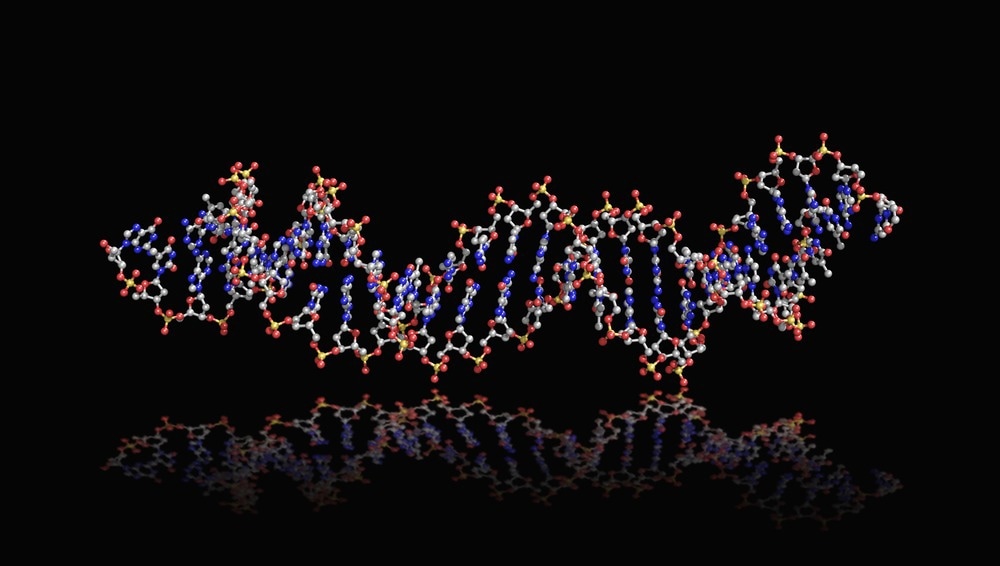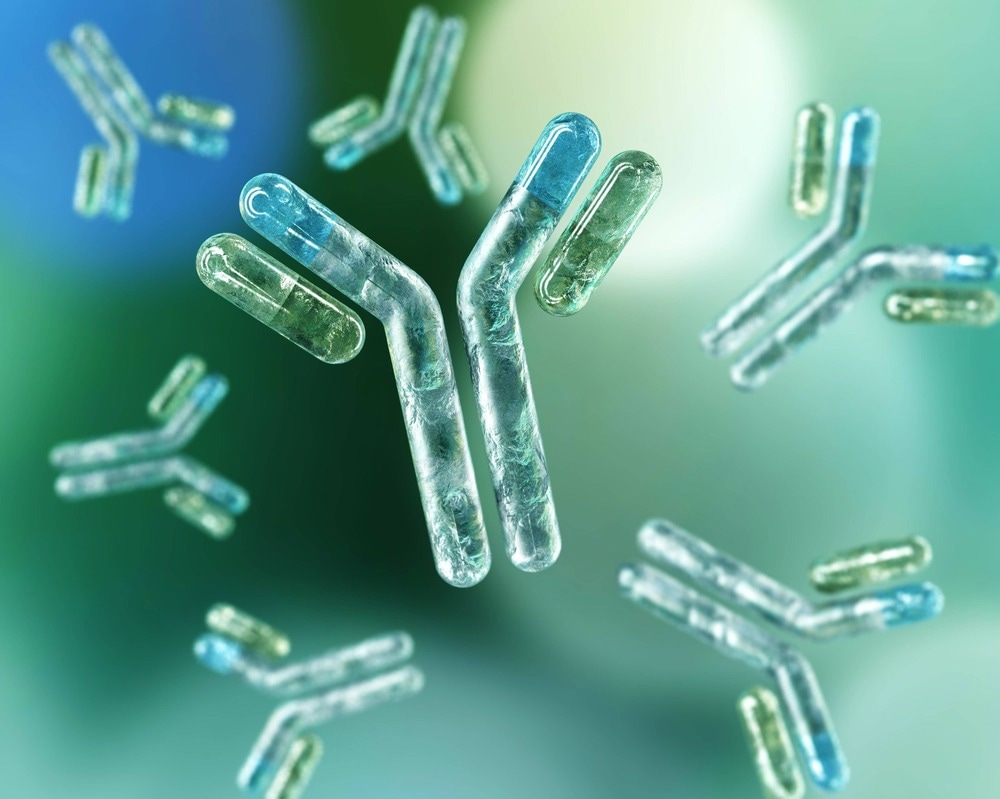Aptamers are small, single-stranded oligonucleotide (DNA or RNA) molecules that have been shown to mimic antibodies and exhibit high affinity and specificity towards their targets. Nucleic acid aptamers are promising alternatives to antibodies and small molecules in imaging, therapeutic, and diagnostic applications.

Image Credit: Huen Structure Bio/Shutterstock.com
What are Aptamers?
RNA and DNA aptamers do not differ in affinity or specificity, but DNA aptamers have higher intrinsic chemical stability. It is important to mention that RNA aptamers exhibit more flexibility and make a wide variety of possible 3D configurations. Although aptamers are1/10th of the molecular weight of antibodies, they have complex, stable tertiary, folded structures with satisfactory recognition surface sites to compete with and even exceed the binding affinity of antibodies.
The exceptional ability of the single-stranded oligonucleotide to fold into stable and unique secondary structures allows them to organize tertiary structures, which not only identify and bind specifically to their targets but also recognize subtle molecular differences within their targets.
Aptamers are chosen from libraries of random oligonucleotide sequences in multiple rounds of alternating partitioning and PCR amplification. More than ten rounds are typically required for the selection of aptamers. There are two main methods to produce aptamers: the Systemic Evolution of Ligands (SELEX) method and the non-SELEX technique. The SELEX method has six main steps: generation of single-stranded oligonucleotide library, target incubation of the randomized oligonucleotide library with the target, binding sequence elution and amplification, obtaining single-stranded DNA following the PCR amplification, counter or negative selection, and tracking selection progression. The sequences produced are analyzed, and the classified sequences found at the highest percentages are the potential aptamers. Genomic SELEX, spiegelmer, photo SELEX, in silico-SELEX, in vivo SELEX, monoLEX, and whole cell-SELEX are variations of the SELEX method.
Non-equilibrium capillary electrophoresis of equilibrium mixture (NECEEM)-based partitioning is the primary non-SELEX method. NECEEM is a new separation-based affinity method that is consisted of two main steps: incubation of the randomized oligonucleotide library with the target and separation of the bound from the unbound nucleic acid ligands with no amplification requirement. These steps are usually repeated three times until nucleic acid pools having high-affinity binders are formed.

Image Credit: ustas7777777/Shutterstock.com
Advantages of Aptamers over Antibodies
Although aptamers have similar functions to antibodies, they offer significant advantages over antibodies. First, unlike antibodies, which irreversibly denatures at room temperature or slightly above, aptamer tolerates ambient as well as higher temperature and reforms to their original conformation when the ideal temperature is reached. Second, aptamers can be readily formed through chemical synthesis, which removes any variations from batch to batch and decreases the time and the cost needed for their synthesis, allowing for large-scale production of aptamers for clinical applications. Third, aptamers have low dissociation constants in the picomolar or femtomolar range. Moreover, the affinity of aptamers can be regulated through optimization of their recognition sequences and/or by changing conditions of the binding reaction. The stability of selected aptamers can be higher through chemical modification of the nucleotide and through modulating their secondary structures
Aptamers have a longer shelf life and are generally more stable than antibodies. Unlike antibodies, aptamers are synthesized via a cheap and simple process, and the time needed to produce aptamers is relatively short. Aptamers can connect to previously intracellular or blocked targets and are less immunogenic than antibodies, thanks to their smaller size compared to antibodies and the lack of requirement of animals for their production. Aptamers are nucleic acids, so they are easily marked, labeled, and modified with different reporter molecules and linkers, thus, giving an easy detection method. Moreover, they can discriminate between highly similar molecules, which differ by only a single methyl group, such as caffeine and theophylline. In fact, they have great potential for use in diagnostic and therapeutic technologies. Not only aptamers are used as drugs, but also in therapies.
Wang and colleagues used aptamer conjugated nanorods in targeted photothermal therapies to identify and kill cancerous prostate cells and cancer stem cells through near-infrared laser irradiation. Additionally, there are recent studies that successfully used aptamers as a method of delivering drugs to affected cells thanks to their cell internalization feature. Scientists started to realize the great potential for aptamers in replacing antibodies in immunoassays.
The specific feature of nucleic acid aptamers as a combination of the best characters of antibodies and small molecules, such as great binding specificity and affinity, can give great potential for future diagnostic and therapeutic applications. It is expected that aptamers will be extremely helpful for diagnostic purposes, including biosensors, aptamer-based magnetic cell sorting, molecular probes, and immunoassays.
Sources:
- Thiviyanathan V, Gorenstein DG. Aptamers and the next generation of diagnostic reagents. PROTEOMICS–Clinical Applications. 2012 Dec;6(11-12):563-73.
- Gopinath SC, Lakshmipriya T, Chen Y, Phang WM, Hashim U. Aptamer-based ‘point-of-care testing’. Biotechnology Advances. 2016 May 1;34(3):198-208.
- Krylov SN. Non-equilibrium capillary electrophoresis of equilibrium mixtures (NECEEM): A novel method for biomolecular screening. Journal of biomolecular screening. 2006 Mar;11(2):115-22.
- Keefe AD, Pai S, Ellington A. Aptamers as therapeutics. Nature reviews Drug discovery. 2010 Jul;9(7):537-50.
- Nimjee SM, White RR, Becker RC, Sullenger BA. Aptamers as therapeutics. Annual review of pharmacology and toxicology. 2017 Jan 6;57:61-79.
- Wang J, Sefah K, Altman MB, Chen T, You M, Zhao Z, Huang CZ, Tan W. Aptamer‐conjugated nanorods for targeted photothermal therapy of prostate cancer stem cells. Chemistry–An Asian Journal. 2013 Oct;8(10):2417-22.
Further Reading